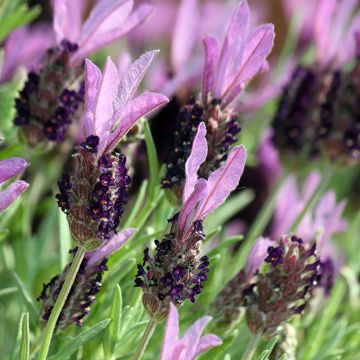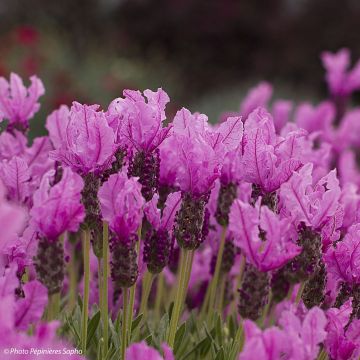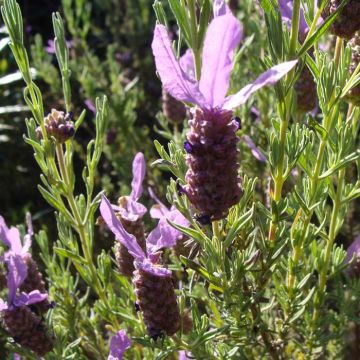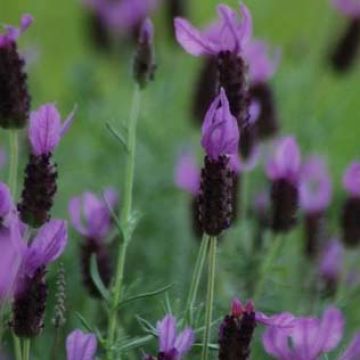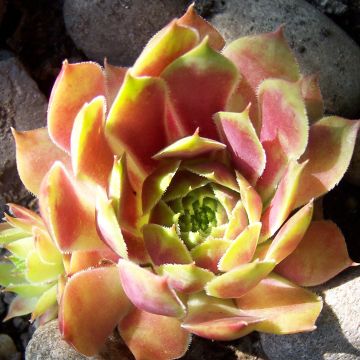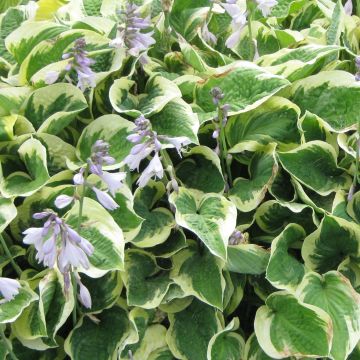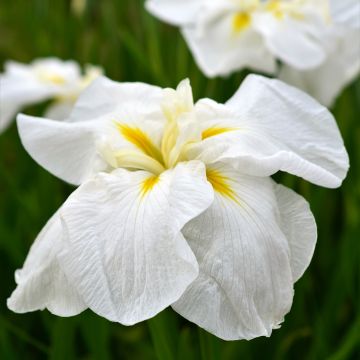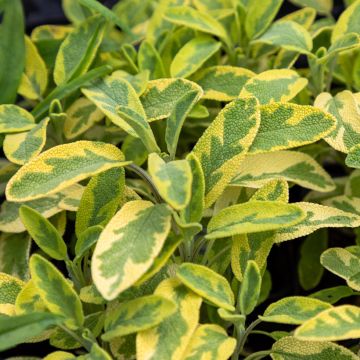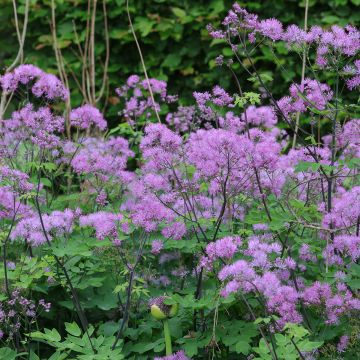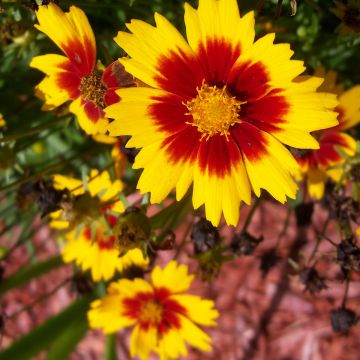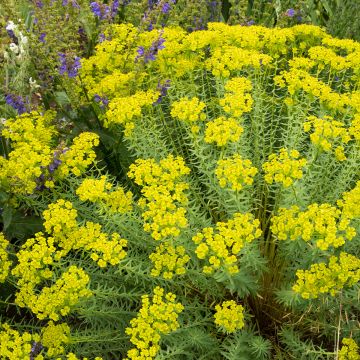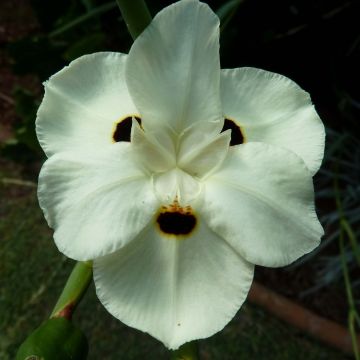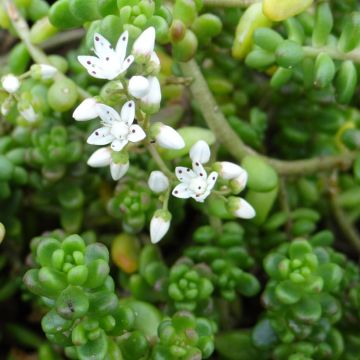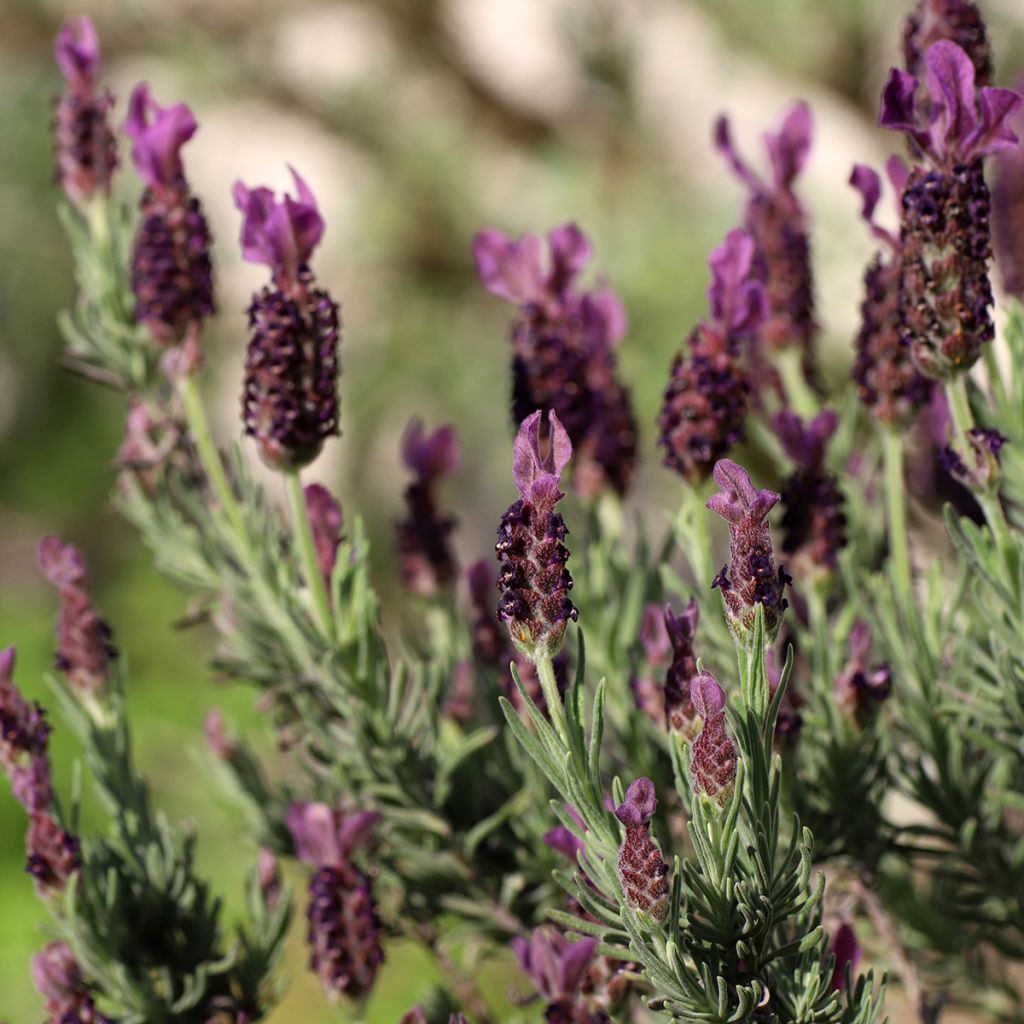

Lavandula stoechas Bandera Deep Purple - French Lavender
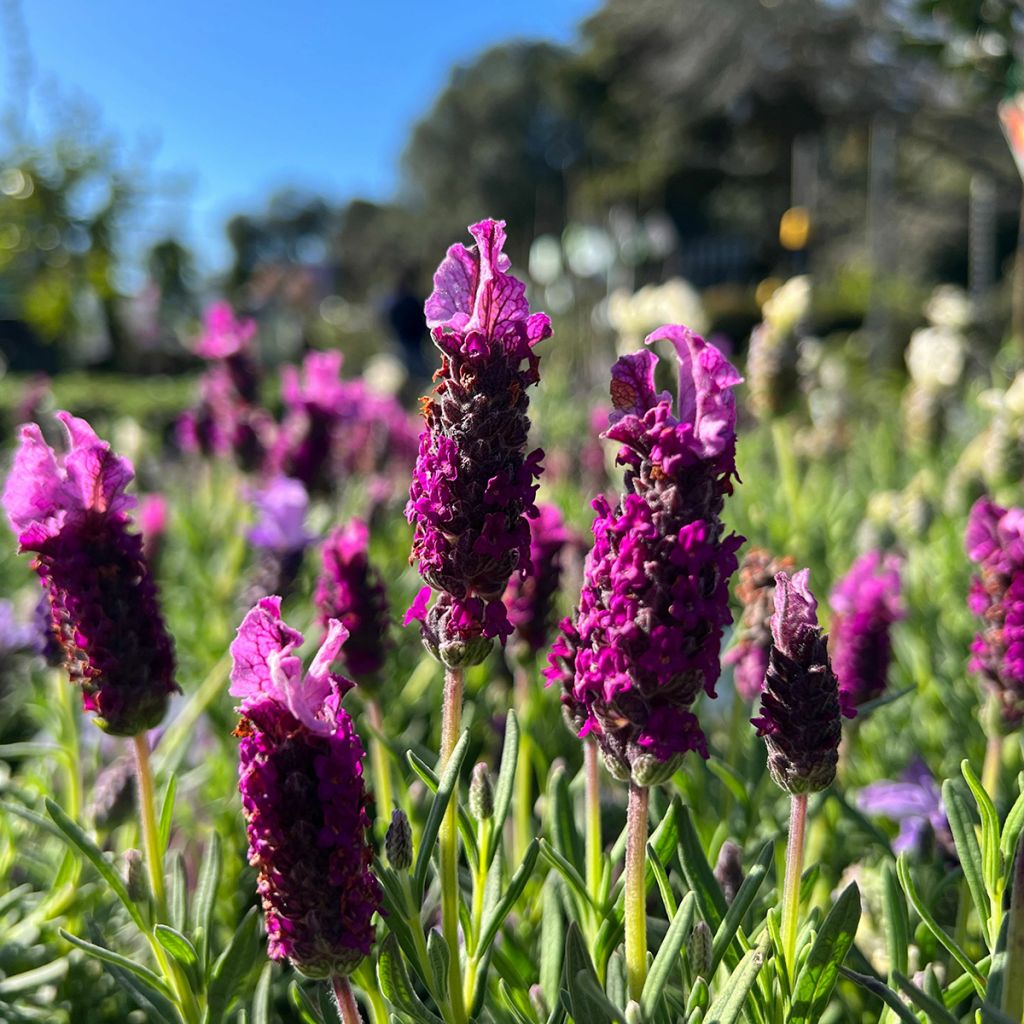

Lavandula stoechas Bandera Deep Purple - French Lavender
Lavandula stoechas Bandera Deep Purple - French Lavender
Lavandula stoechas Bandera Deep Purple
French Lavender, Cassidony, Spanish Lavender, Butterfly Lavender
This item cannot be shipped to the selected country
Delivery charge from €5.90
Delivery charge from €5.90
More information
Schedule delivery date,
and select date in basket
This plant carries a 12 months recovery warranty
More information
We guarantee the quality of our plants for a full growing cycle, and will replace at our expense any plant that fails to recover under normal climatic and planting conditions.
From €5.90 for pickup delivery and €6.90 for home delivery
Express home delivery from €8.90.
From €5.90 for pickup delivery and €6.90 for home delivery
Express home delivery from €8.90.

Does this plant fit my garden?
Set up your Plantfit profile →
Description
Lavandula stoechas Bandera Deep Purple is an excellent variety of butterfly lavender with a compact and regular habit, which is very floriferous in summer and highly fragrant. This variety with very dark flowers attracts bees. It also charms with its slightly silvery aromatic foliage in summer, evergreen in winter. Butterfly lavender is highly resistant to drought. Unlike classic lavenders, it grows in non-calcareous soil. It is a variety particularly suitable for balcony and patios.
Lavandula stoechas Bandera Deep Purple is a descendant of Lavandula stoechas, an aromatic plant from the Lamiaceae family native to the western Mediterranean basin. Wild butterfly lavender is a shrub with evergreen leaves that blooms in spring on siliceous slopes, in non-calcareous soil, which is very dry in summer. It is a moderately hardy plant ,up to -10°C (14°F) at the extreme. This plant dislikes moisture combined with severe frost, but also moisture combined with heat, which promotes the development of a fungus deadly to the roots. The Bandera Deep Purple variety is the first variety with a naturally very compact habit. It is a shrub with a very dense vegetation, broadly rounded in shape, which does not open up. Its quadrangular stems bear narrow, downy leaves, greenish grey in colour, with fringed edges, giving off a pine scent when crushed. The plant reaches a height of between 30 and 35 cm (12 and 14in) at the time of flowering, 20-25 cm (8-10in) for the foliage. It blooms from late May or early June to late September, depending on climate. At the tip of each stem, a dense, short-stalked, thick, square-shaped spike forms, bearing tiny dark violet flowers. This spike is crowned with several petaloid bracts, resembling butterfly wings, which are a purplish pink colour. It is heavily visited by pollinating insects, especially bees. It is a nectariferous and melliferous plant.
Lavandula stoechas Bandera Deep Purple requires, unlike most other lavenders, to be planted in non-calcareous soil. When young, it needs to be protected from frost. Plant it in full sun in a very well-drained soil (even a dry and rocky soil). In sunny and warm situations, its silvery foliage is radiant and its flowers exude an intense fragrance. An ornamental and Mediterranean plant par excellence, it can be used in borders, rockeries, and pots. Its generous violet flowering goes well with the grey foliage of cotton lavenders, with pink lavenders like 'The Princess', pink groundcover roses ('Satina') or Gauras. It can also be grown in pots on the patio or balcony. It can then be overwintered in the coldest regions of our country.
Properties: As lavender is a highly melliferous plant, it contributes to the conservation of bees: the nectar of its flower attracts bees, making it one of the most renowned honey plants.
Report an error about the product description
Flowering
Foliage
Plant habit
Botanical data
Lavandula
stoechas
Bandera Deep Purple
Lamiaceae
French Lavender, Cassidony, Spanish Lavender, Butterfly Lavender
Cultivar or hybrid
Other French Lavender
Planting and care
In nature, butterfly lavender always lives in poor and siliceous (non-limestone), dry, arid, perfectly drained environments. It hates summer watering with limestone water, which causes it to disappear, as it is very sensitive to fungal diseases induced by the combination of heat and moisture. This 'Bandera Deep Purple' variety is only very resistant to frost to -10 °C (14°F). It is advisable to cultivate it in an elevated bed, in front of a south or west-facing wall or in a pot to overwinter it. It lends itself very well to pot cultivation if watering is controlled.
It requires good drainage (add non-limestone gravel, plant on a slope or in a rock garden), and it will grow better and last longer in poor soil, as its growth will be slower and it will have less tendency to thin out at the base. To limit this phenomenon, prune it from a young age, after flowering or in the autumn, just above the first buds that can be seen on the wood. Lavenders never sprout from old wood. The clump will therefore become more and more branched, remaining compact, eventually forming beautiful dense cushions. When planting, use non-limestone gravel, coarse sand, but avoid soil enriched with fertilisers. When pruning after flowering, do not throw away the faded flowers, but collect them to make sachets that will delicately perfume the wardrobes and also act as excellent moth repellents. For making dried bouquets, harvest the just bloomed lavender flowers and let them dry in a dry and ventilated place, upside down.
Planting period
Intended location
Care
-
, onOrder confirmed
Reply from on Promesse de fleurs
Summer flowering perennials
Haven't found what you were looking for?
Hardiness is the lowest winter temperature a plant can endure without suffering serious damage or even dying. However, hardiness is affected by location (a sheltered area, such as a patio), protection (winter cover) and soil type (hardiness is improved by well-drained soil).

Photo Sharing Terms & Conditions
In order to encourage gardeners to interact and share their experiences, Promesse de fleurs offers various media enabling content to be uploaded onto its Site - in particular via the ‘Photo sharing’ module.
The User agrees to refrain from:
- Posting any content that is illegal, prejudicial, insulting, racist, inciteful to hatred, revisionist, contrary to public decency, that infringes on privacy or on the privacy rights of third parties, in particular the publicity rights of persons and goods, intellectual property rights, or the right to privacy.
- Submitting content on behalf of a third party;
- Impersonate the identity of a third party and/or publish any personal information about a third party;
In general, the User undertakes to refrain from any unethical behaviour.
All Content (in particular text, comments, files, images, photos, videos, creative works, etc.), which may be subject to property or intellectual property rights, image or other private rights, shall remain the property of the User, subject to the limited rights granted by the terms of the licence granted by Promesse de fleurs as stated below. Users are at liberty to publish or not to publish such Content on the Site, notably via the ‘Photo Sharing’ facility, and accept that this Content shall be made public and freely accessible, notably on the Internet.
Users further acknowledge, undertake to have ,and guarantee that they hold all necessary rights and permissions to publish such material on the Site, in particular with regard to the legislation in force pertaining to any privacy, property, intellectual property, image, or contractual rights, or rights of any other nature. By publishing such Content on the Site, Users acknowledge accepting full liability as publishers of the Content within the meaning of the law, and grant Promesse de fleurs, free of charge, an inclusive, worldwide licence for the said Content for the entire duration of its publication, including all reproduction, representation, up/downloading, displaying, performing, transmission, and storage rights.
Users also grant permission for their name to be linked to the Content and accept that this link may not always be made available.
By engaging in posting material, Users consent to their Content becoming automatically accessible on the Internet, in particular on other sites and/or blogs and/or web pages of the Promesse de fleurs site, including in particular social pages and the Promesse de fleurs catalogue.
Users may secure the removal of entrusted content free of charge by issuing a simple request via our contact form.
The flowering period indicated on our website applies to countries and regions located in USDA zone 8 (France, the United Kingdom, Ireland, the Netherlands, etc.)
It will vary according to where you live:
- In zones 9 to 10 (Italy, Spain, Greece, etc.), flowering will occur about 2 to 4 weeks earlier.
- In zones 6 to 7 (Germany, Poland, Slovenia, and lower mountainous regions), flowering will be delayed by 2 to 3 weeks.
- In zone 5 (Central Europe, Scandinavia), blooming will be delayed by 3 to 5 weeks.
In temperate climates, pruning of spring-flowering shrubs (forsythia, spireas, etc.) should be done just after flowering.
Pruning of summer-flowering shrubs (Indian Lilac, Perovskia, etc.) can be done in winter or spring.
In cold regions as well as with frost-sensitive plants, avoid pruning too early when severe frosts may still occur.
The planting period indicated on our website applies to countries and regions located in USDA zone 8 (France, United Kingdom, Ireland, Netherlands).
It will vary according to where you live:
- In Mediterranean zones (Marseille, Madrid, Milan, etc.), autumn and winter are the best planting periods.
- In continental zones (Strasbourg, Munich, Vienna, etc.), delay planting by 2 to 3 weeks in spring and bring it forward by 2 to 4 weeks in autumn.
- In mountainous regions (the Alps, Pyrenees, Carpathians, etc.), it is best to plant in late spring (May-June) or late summer (August-September).
The harvesting period indicated on our website applies to countries and regions in USDA zone 8 (France, England, Ireland, the Netherlands).
In colder areas (Scandinavia, Poland, Austria...) fruit and vegetable harvests are likely to be delayed by 3-4 weeks.
In warmer areas (Italy, Spain, Greece, etc.), harvesting will probably take place earlier, depending on weather conditions.
The sowing periods indicated on our website apply to countries and regions within USDA Zone 8 (France, UK, Ireland, Netherlands).
In colder areas (Scandinavia, Poland, Austria...), delay any outdoor sowing by 3-4 weeks, or sow under glass.
In warmer climes (Italy, Spain, Greece, etc.), bring outdoor sowing forward by a few weeks.

































